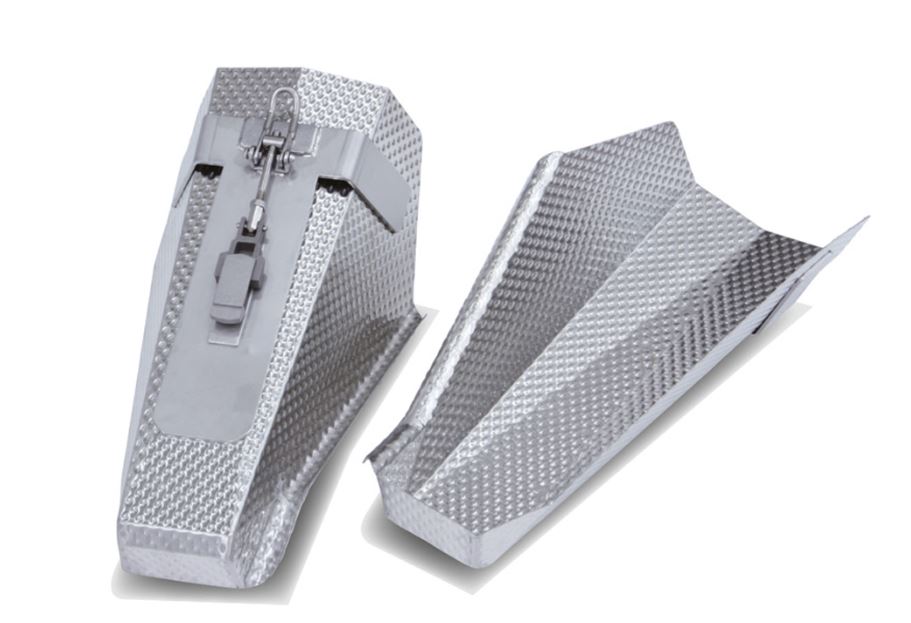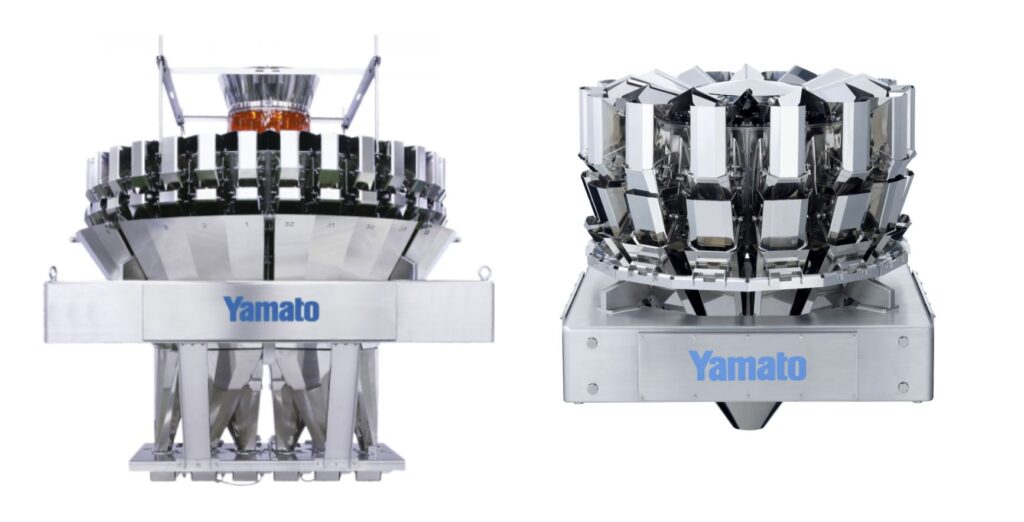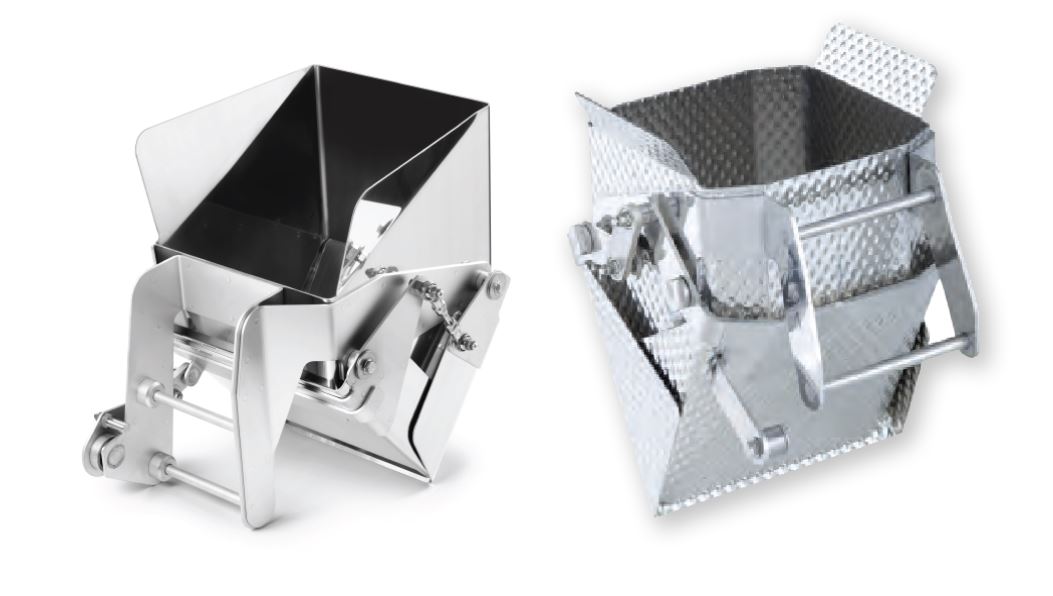Multihead Weighers 101: Choosing the Right Combination Scale for Your Application
Written by Yamato Corporation
If you take a look at the Yamato Dataweigh™ Combination Scales page on YamatoAmericas.com, you might think that all the multihead weighers look the same. At first glance, they do appear to be similar, but multihead weighers, also commonly referred to as combination scales, are highly customized pieces of food-packaging equipment.
The first multihead weigher was introduced to the packaging industry in the 1970s. Since then, there have been quite a few technological advancements made; however, design-wise, the exterior look of these scales has not changed too much. But even though they look similar, you can’t just use any combination scale to weigh any application.
At Yamato Corporation, we want to make sure you don’t make the mistake of purchasing a multihead weigher before knowing if that specific scale is going to be right for your application, as there are many different applications and many multihead weighers.
This article will give you a better understanding of the features and components you need to consider when choosing the right combination scale for your application.
Start with a Few Product-Specific Questions
To ensure you buy the best scale for your application, start by asking yourself these 5 questions:
- What type of product(s) do you want to run on the scale?
- What are the characteristics of the product(s)? (Shape, piece size, stickiness, fresh vs. frozen, etc.)
- What level of sanitation is required? (Washdown vs. wipe-down)
- What are your requirements for target weight(s) and speed(s)?
- What packaging equipment will be under the scale? (VFFS, tray line, pouch machine, jar line, etc.)
Discussing the answers to these questions and providing as many product details as possible will help you and a scale manufacturer determine the best weighing equipment for your application.
Make a Product Matrix
Yamato recommends you make a product matrix to determine the product(s) and target weight(s) you want the scale to run. Know this before you even begin researching multihead weighers. Providing more detail related to the immediate – and future – needs of a scale will likely save you time and money in the long run.
Determine if Your Product Will Run
Multihead weighers all use vibration to move product down the feed pans to the feed buckets. If you cannot start and stop the movement of product on the top of the scale, then a multihead weigher is not going to be a viable weighing solution for you. Take this into consideration and be prepared to send in samples to a scale manufacturer so they can test if the product can be run on this type of scale.
Understand the Difference in Product Contact Surfaces
The first important detail to consider for your multihead weigher is the product contact surfaces. The product contact surfaces are just that – any surface that your product will contact. Different surfaces are used on a scale depending on the characteristics of the product(s) being run.
Most combination scale manufactures will offer their scales with at least two different options for product contact surfaces.
- Smooth: Smooth, polished contact surfaces will be used for free-flowing products such as dry snacks, nuts, hard candies, and seasoned items.
- Embossed: Embossed contact surfaces are used for harder-to-move products because they minimize the surface area that contacts the product. Some manufacturers, like Yamato, offer multiple levels of embossing to further maximize product movement through the scale.
Determine the Proper Product-Specific Configuration
Once the ideal product contact surface type has been determined, it is time to look at four other areas of the multihead weigher that require product-specific configuration. This includes the scale’s top cone, linear feed pans, bucket size and door type, and collating chutes and funnel.
- Top Cone: When product is added to the scale, it lands on the top cone and is distributed through vibrations out to the linear feed pans. The rigidity, moisture content, stickiness, and shape of the product will determine the texture and angle of the top cone. Products like leafy greens require a very steep, embossed top cone to stop product from piling up in the center of the scale. Smaller products like jellybeans or nuts will require a flat top cone so the product will not roll or move too quickly down the scale’s linear feed pans.

- Linear Feed Pans: The next step is to determine what type of linear feed pans will be best for moving the product into the buckets. Like with the top cone, the scale vibrates to move product along the linear feed pans. Different manufacturers offer different options for linear feed pans. Feed pans can be U-shaped, V-shaped, flat, or cascading. Linear feed pans can also be configured with different angles. Steeper angles help move product towards the scale’s buckets whereas flatter feed pans will slow down round products that like to roll. All of these details are completely dependent on the product that is being weighed.

- Bucket Size and Door Type: Choosing the bucket size of the scale is probably the easiest part when configuring a scale. The size of the buckets will be determined by the max piece size and target weight. Buckets need to be big enough to hold the product required for the specified target weight(s). They also need to be sized so that when bucket doors are open, there is enough room for the product to evacuate the bucket without catching it. Some buckets will have a single-action door, meaning only one side opens, and some will have dual-action bomb-bay style doors. Different product characteristics will determine which door type is best for your application. When it comes to bucket sizes, here’s a helpful hint to keep in mind – there is NO industry standard when it comes to quantifying bucket sizes. For example, a 3-liter bucket from one company could be a 5-liter bucket at another, and a 1-liter bucket at another. When talking to a scale manufacturer, especially if you’re talking to more than one, it is important to understand how the manufacturer sizes their buckets.
- Collating Chutes and Funnel: A multihead weigher’s collating chutes and funnel are pretty straightforward to configure. Products that tend to stick will typically require steeper chutes and funnels whereas free-flowing products will often have shallower, angled chutes and funnels. Some products tend to swirl. If your product swirls, depending on the severity, individual chutes and segmented funnels can be used to help guide the product more directly out of the collating funnel.
Determine the Number of Buckets
Once the proper scale components are selected, it is time to move on to the fun part … How fast can the scale go? What’s the most accurate it can be?
The final step is to determine the number of buckets needed to achieve the desired speed and accuracy.
Different manufacturers have different standards as to how many buckets they like to use in a combination. The more buckets a scale has, the greater the potential for speed and accuracy. That being said, the law of diminishing returns does ring true. There is no need to spend more on additional heads if your application does not have the speeds and/or target weights to justify the additional cost. This is why the vast majority of combination scales use 14 weigh heads. Basic combination theory should also be taken into consideration.
We’re Happy to Help
A properly configured combination scale can make or break your entire packaging line. It is important to make sure the scale you purchase is designed specifically for the product(s) you plan to run.
So, what do you want to weigh? A Yamato scale can weigh it. Let us help you configure the right scale for your application. Contact us to speak to one of our weighing experts.

